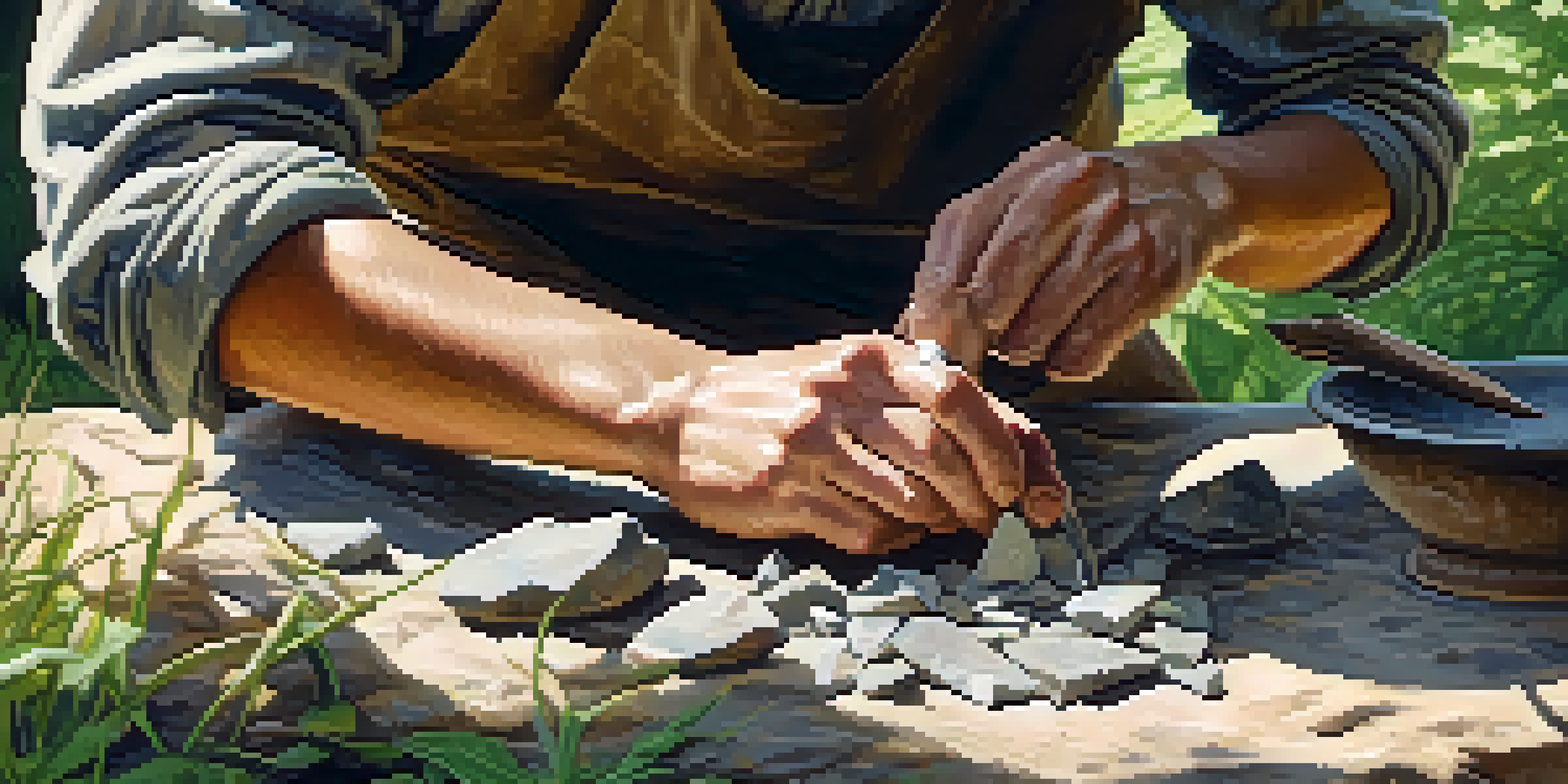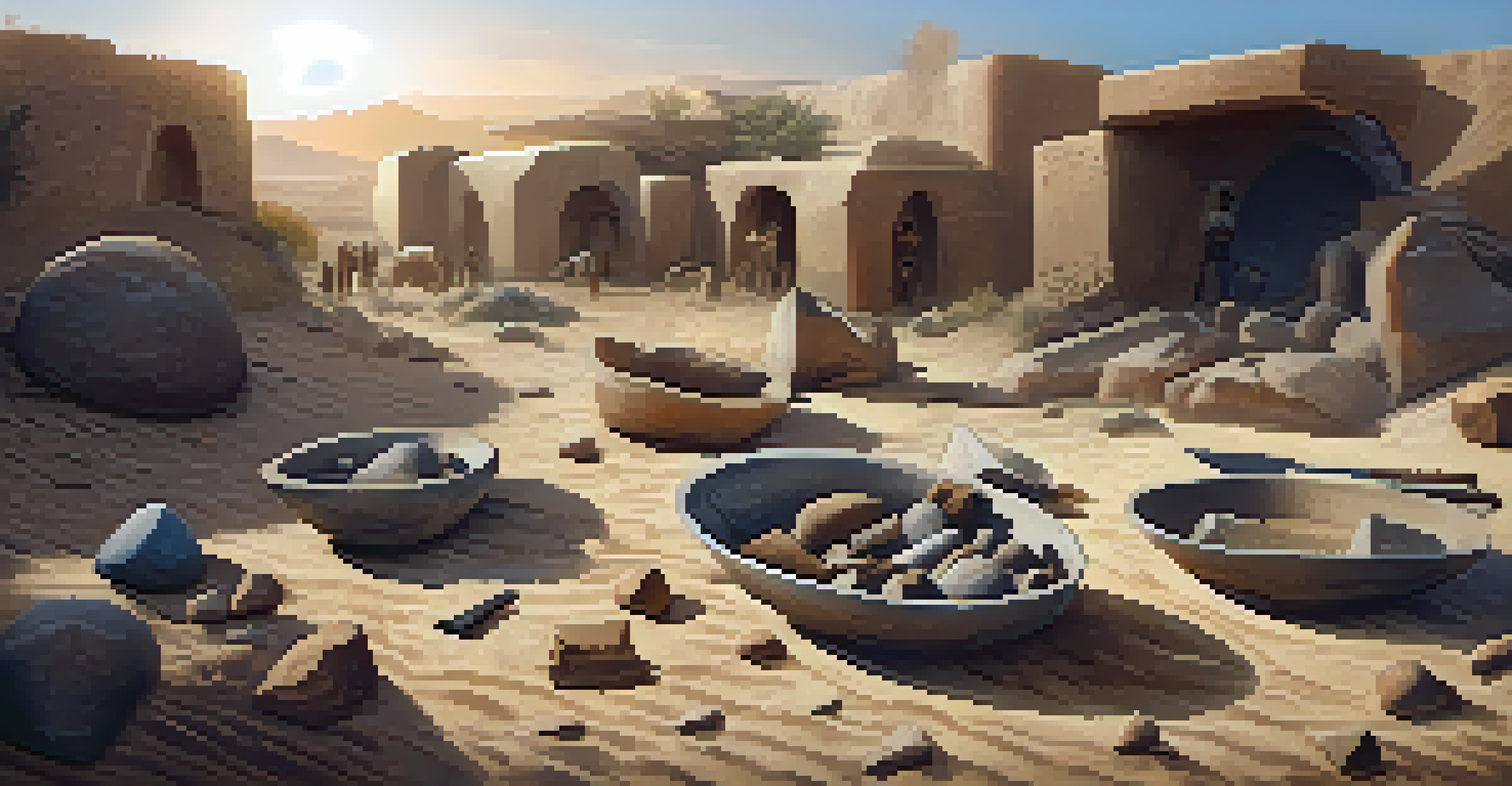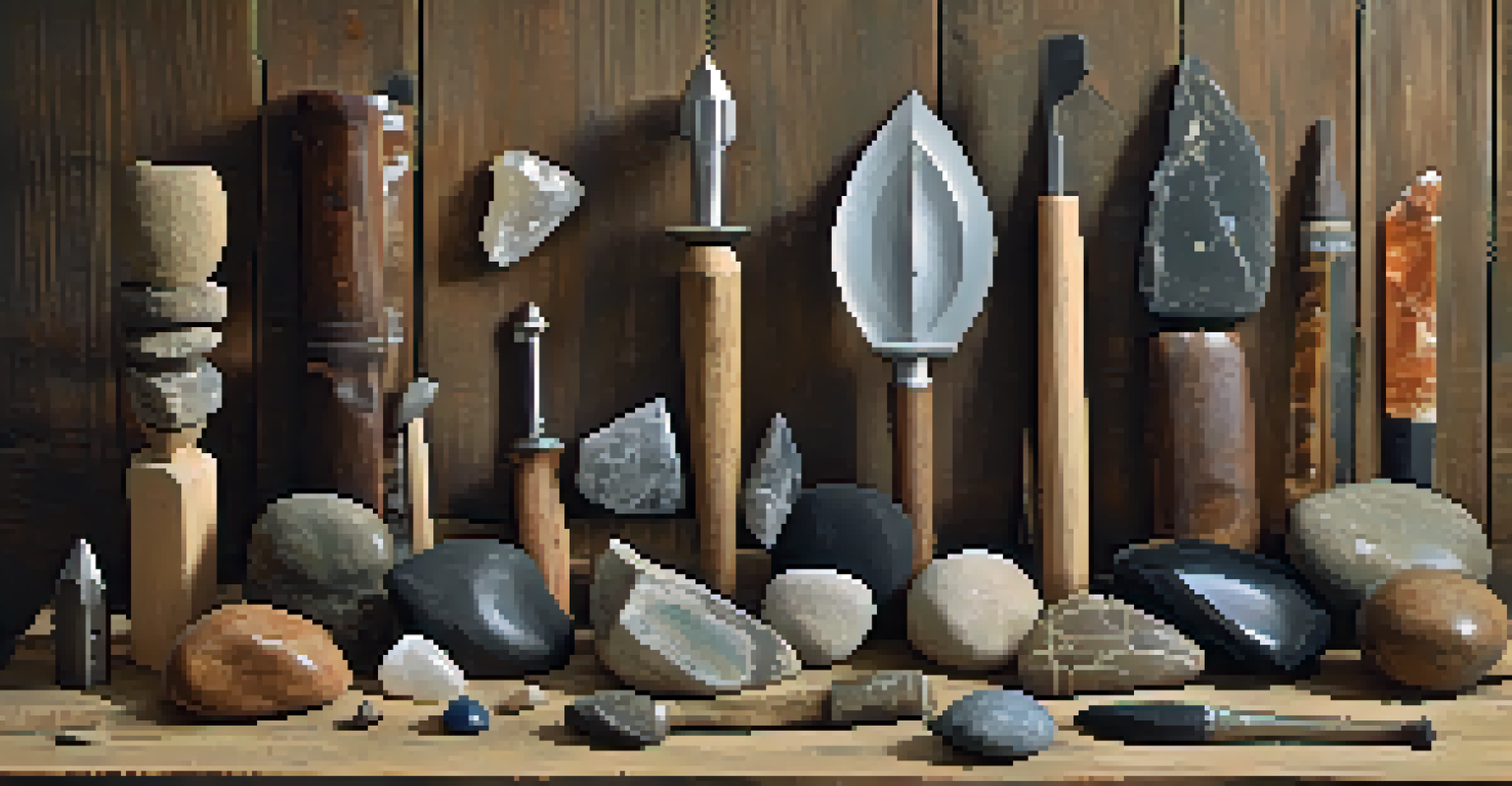Anatomy of Stone Tools: Understanding Their Design and Use

Introduction to Stone Tools: A Brief Overview
Stone tools are some of the earliest instruments created by humans, marking a significant milestone in our evolutionary journey. They date back millions of years and provide invaluable insights into early human life. Understanding their anatomy helps us appreciate their design and functionality in various contexts.
The tools we use have a profound impact on our thinking. They shape our perceptions and the way we interact with the world.
These tools were primarily used for cutting, chopping, and scraping, making them essential for survival. Each tool's design reflects the specific needs and challenges faced by ancient peoples. By examining the characteristics of these tools, we can uncover the ingenuity of our ancestors.
From simple flakes to sophisticated hand axes, stone tools demonstrate the evolution of human skill and creativity. Their study not only informs us about past technologies but also sheds light on the social and cultural dynamics of early societies.
Materials Used in Stone Tool Making
The choice of materials is crucial in the creation of stone tools, as it directly affects their effectiveness and durability. Early humans used various types of stones, such as flint, obsidian, and quartz, each selected for its unique properties. For instance, flint is known for its ability to be sharpened to a fine edge, making it ideal for cutting.

Obsidian, a volcanic glass, is exceptionally sharp and can be crafted into finely pointed tools, which were advantageous for hunting. Understanding these materials helps us grasp why certain stones were favored over others and how resource availability impacted tool design.
Stone Tools Reveal Early Human Life
Stone tools provide crucial insights into the survival strategies and social dynamics of our ancient ancestors.
Moreover, the process of tool-making itself—known as knapping—involves striking the stone to create sharp edges. This skill required practice and knowledge of the material, showcasing the craftsmanship and innovation of early humans.
Key Types of Stone Tools and Their Functions
Stone tools can be categorized into various types, each serving distinct purposes. Some of the most well-known categories include hand axes, scrapers, and blades. Hand axes, for example, were versatile tools used for butchering animals and processing plant materials, showcasing their multifunctionality.
Innovation distinguishes between a leader and a follower.
Scrapers, on the other hand, were specifically designed for removing flesh from hides or preparing wood. Blades were typically sharper and used for precision tasks, highlighting the evolution of tool design as human needs became more complex.
By studying the different types of stone tools, we can infer the lifestyles and practices of ancient peoples. Each tool tells a story of adaptation and survival, reflecting the environment and cultural context in which it was used.
The Process of Knapping: Crafting Stone Tools
Knapping is the art of shaping stone into tools through a careful process of striking and flaking. This technique requires skill and an understanding of the stone's properties to produce effective tools. The knapper strikes the stone with another object, creating small flakes that are removed to shape the final product.
The process itself can be likened to sculpting, where the knapper envisions the end product and meticulously removes material to achieve the desired shape and sharpness. This craftsmanship highlights the creativity and ingenuity of early humans as they adapted to their environments.
Knapping: The Art of Tool Making
The process of knapping showcases the skill and creativity of early humans in crafting effective stone tools.
Understanding knapping provides insight into the intelligence and adaptability of our ancestors, as it required not only physical skill but also an intimate knowledge of the materials they worked with.
Cultural Significance of Stone Tools in Early Societies
Stone tools were not only functional but also held cultural significance in early societies. They played a crucial role in everyday survival, influencing social structures and relationships. The ability to create and share tools likely promoted cooperation and knowledge transfer among community members.
Additionally, certain stone tools may have had symbolic meanings or been used in rituals, reflecting the beliefs and values of early peoples. This connection between tools and culture underscores the idea that technology and social practices are deeply intertwined.
By examining the cultural aspects of stone tools, we can better understand the complexities of early human life and the role of technology in shaping societal development.
Archaeological Discoveries: Uncovering Stone Tools
Archaeological excavations have unearthed numerous stone tools, providing a window into the past. These discoveries help researchers piece together the lifestyles of ancient humans and their interactions with the environment. Sites around the world continue to reveal new findings that challenge our understanding of technology and culture.
For instance, the discovery of tools in unexpected locations suggests that early humans traveled further than previously thought. Each find adds depth to our knowledge of human migration and adaptation, offering clues about how stone tools were utilized across different landscapes.
Cultural Impact of Stone Tools
Stone tools not only served practical purposes but also influenced social structures and cultural practices in early societies.
These archaeological efforts highlight the importance of stone tools in reconstructing histories and understanding human evolution. They are tangible links to our ancestors, allowing us to explore their innovations and resilience.
The Legacy of Stone Tools in Modern Context
The impact of stone tools extends far beyond their time, influencing modern technology and craftsmanship. Today, many of the principles of tool-making and design can be traced back to these ancient innovations. Even in contemporary craftsmanship, the importance of material selection and design remains paramount.
In addition, studying stone tools fosters a greater appreciation for human ingenuity and resilience. They remind us of our ability to adapt and innovate in the face of challenges, a theme that resonates throughout history.

By understanding the legacy of stone tools, we gain insights into not only our past but also the foundations of modern technology and societal development. This connection serves as a reminder of the enduring influence of our ancestors on today's world.